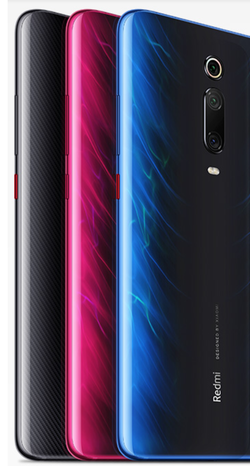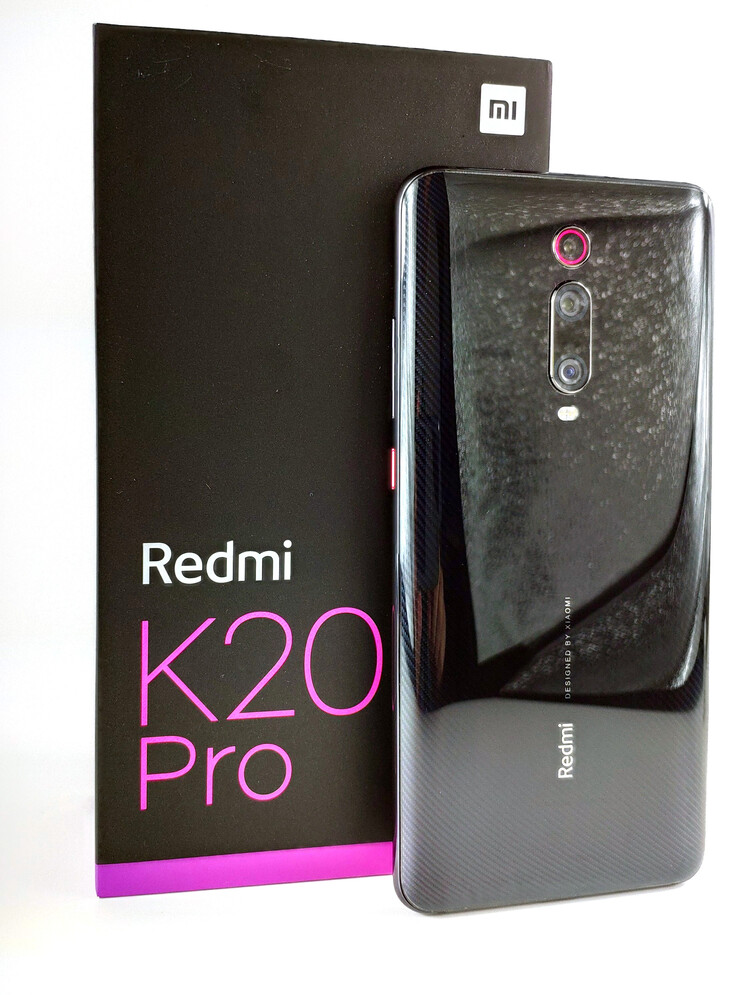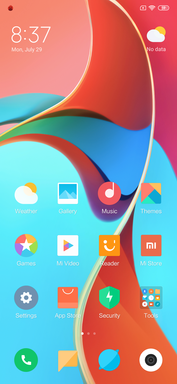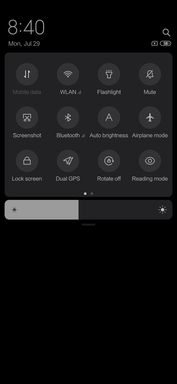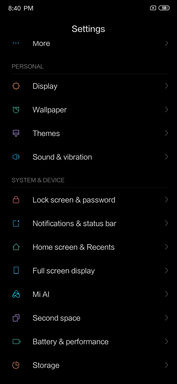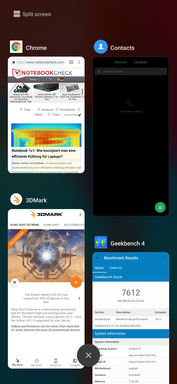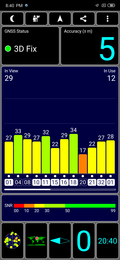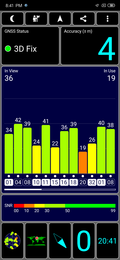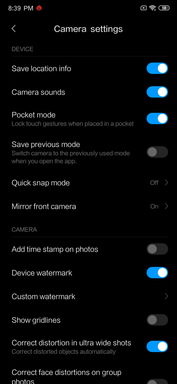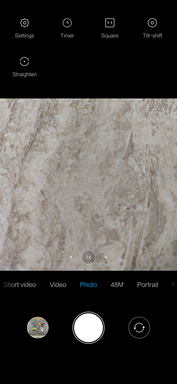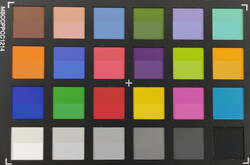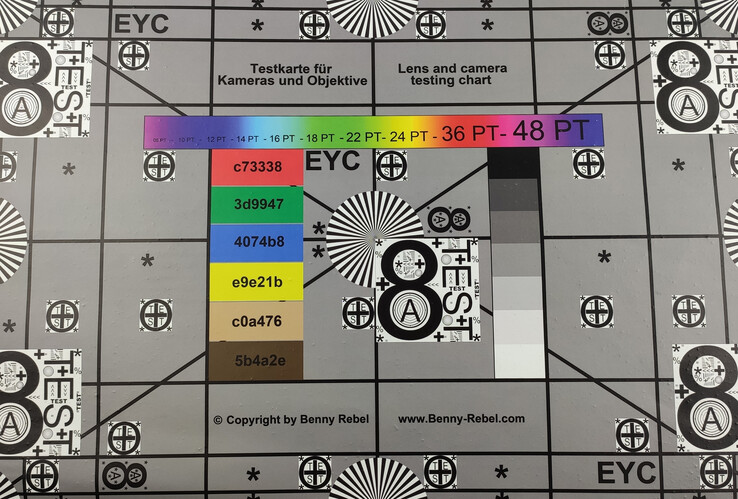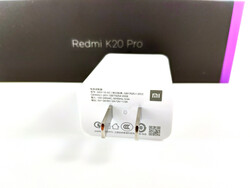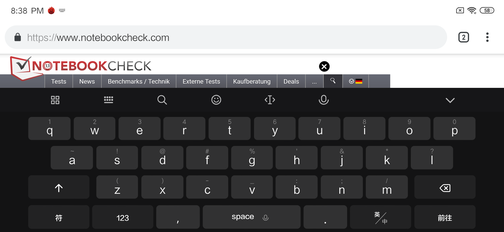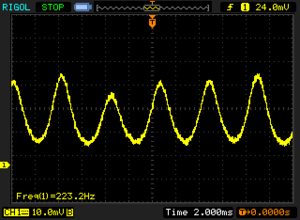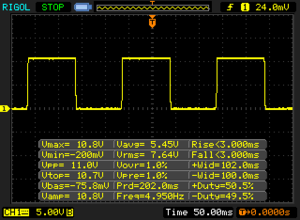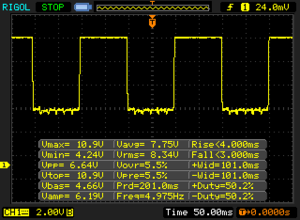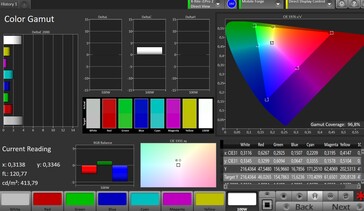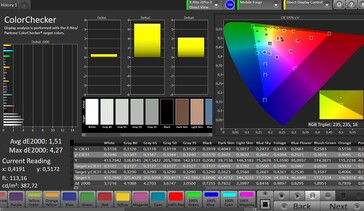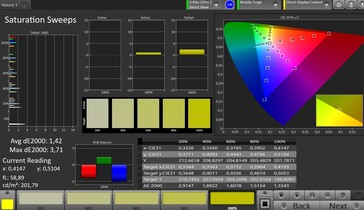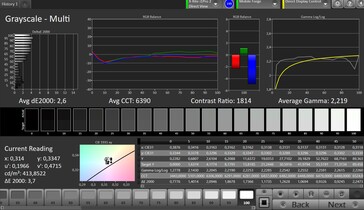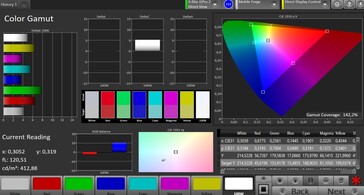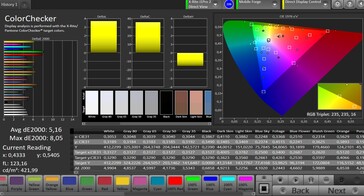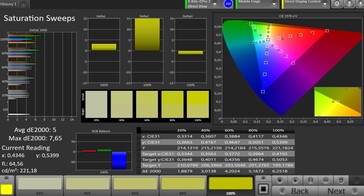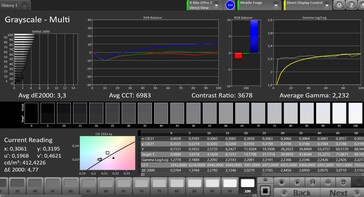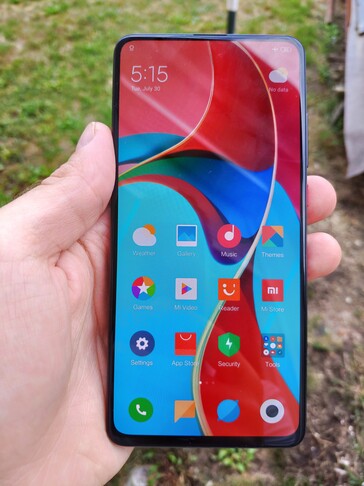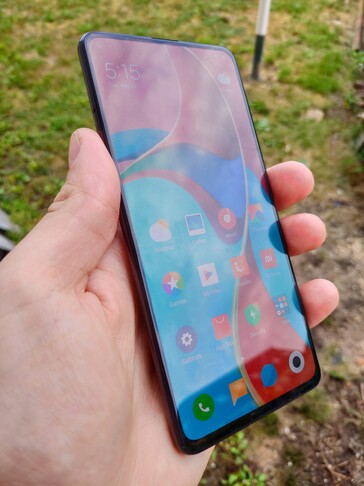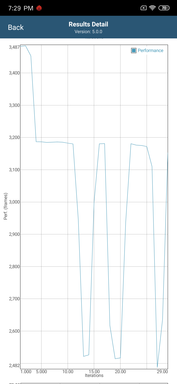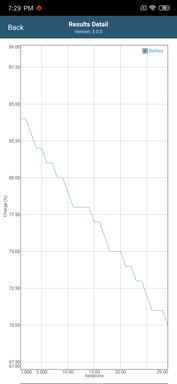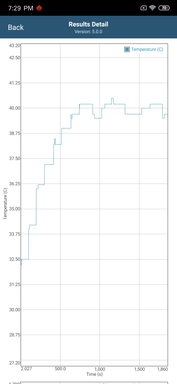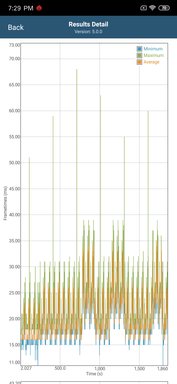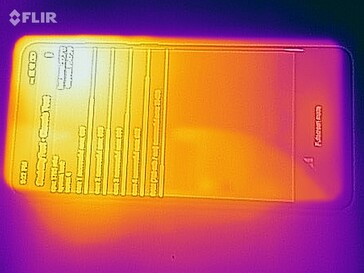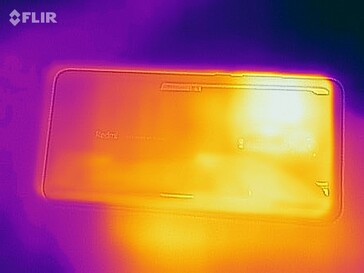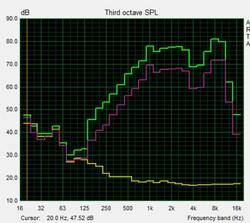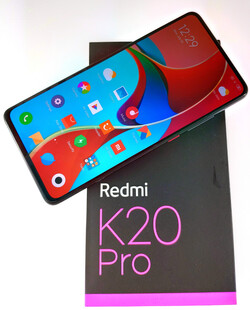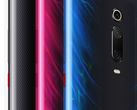Xiaomi Mi 9T Pro (Redmi K20 Pro) Smartphone Review: Not another Mi 9 with a pop-up camera
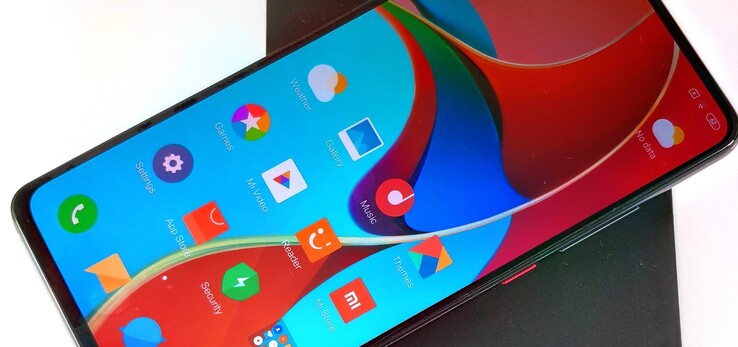
Xiaomi is getting good mileage from the Mi 9 series, with us already having reviewed the Mi 9, Mi 9 SE and Mi 9T. Now we have got our hands on the Mi 9T Pro, which is where things start to get confusing. Xiaomi will sell the device as the Mi 9T Pro worldwide but sells it as the Redmi K20 Pro in select markets like China and India. The same applies to the Mi 9T, which also drops the Pro nomenclature for its Redmi-branded version.
It is unclear when Xiaomi will bring the Mi 9T Pro to market in Europe, but Xiaomi managers in Poland and Russia have confirmed that the company eventually plans to do so. Xiaomi’s in-house camera app contains hints that the device is on its way though, with community developers on XDA Developers finding the watermark "Shot on Mi 9T Pro" within its code. Likewise, entries at the WiFi Alliance and the Bluetooth SIG point towards an impending Mi 9T Pro release. Hence, while our review unit is branded as the Redmi K20 Pro, it will serve as our Mi 9T Pro review too. Hereafter, we shall refer to the device as the Mi 9T Pro to simplify matters.
The Mi 9T Pro comes with a Qualcomm Snapdragon 855 SoC just like the regular Mi 9, which offers a sizable performance improvement over the Snapdragon 730 in the Mi 9T. The Mi 9T Pro also has a better main rear-facing camera than its non-Pro sibling, with Xiaomi opting for a Sony IMX586 sensor instead of the IMX582 that it used in the Mi 9T. The two devices are indistinguishable aside from the camera sensor and SoC, with them both having a 6.39-inch AMOLED Full HD+ display, an in-screen fingerprint scanner, a 4,000 mAh battery, 8 GB RAM and an optional 256 GB of UFS 2.1 flash storage. Additionally, they both come with a motorised pop-up camera and in the same three striking colours.
The Mi 9T Pro currently starts at around 360 Euros (~US$400) for the 8 GB RAM and 64 GB of storage model, with the 128 GB version costing an additional 40 Euros (~US$44). If you want the 256 GB version, then you will need to fork out a further 20 Euros (~US$22). However, we suspect that the international version will start at 400 Euros (~US$444) if the Mi 9T pricing is anything to go by, meaning that the 256 GB version will probably retail for upwards of 460 Euros (~US$511).
We have chosen to compare the Mi 9T Pro against other comparably priced and equipped smartphones. Our comparison devices will include the ASUS ZenFone 6, Google Pixel 3a XL, OnePlus 7, LG G8S ThinQ, Samsung Galaxy A80, and Xiaomi Mi 9.
Case
Xiaomi covers the back of the Mi 9T Pro in scratch-resistant 2.5D Corning Gorilla glass, which tapers seamlessly into its metal frame. Gorilla glass protects the display too, although this lies flat with the frame rather than blending into it as the back does. The former also has a glossy finish, making it a fingerprint magnet. This should not be an issue though if you plan to keep it protected in the silicone case that Xiaomi includes in the box.
The Mi 9T Pro has only an 86% screen-to-body ratio despite appearances, which is a few percent less than OnePlus managed with the OnePlus 7 Pro. Xiaomi currently sells the Mi 9T Pro in Carbon Black, Glacier Blue and Flame Red, with our review unit being the Carbon Black model.
The Mi 9T Pro is heavier than all but the Galaxy A80 of our comparison devices, with it also being noticeably thicker than the Mi 9, G8S ThinQ, Pixel 3a XL and OnePlus 7. Irrespective, our review unit is well-built, and its motorised pop-up camera only wobbles slightly if we apply pressure to it. Its physical buttons sit firmly in their housings too, while there are no unsightly or uneven gaps between materials. Disappointingly, the Mi 9T Pro has no IP rating, a move Xiaomi probably made to keep costs down.
Connectivity
We always like to see OEMs using USB Type-C rather than micro USB, although the one in the Mi 9T Pro only operates on the slower USB 2.0 standard. You can still connect external peripherals like USB sticks or keyboards and mice with the appropriate adapter, but large wired data transfers will take longer than they would if Xiaomi had included a USB 3.1 Type-C port instead. The Mi 9T Pro supports Miracast too should you have a suitable external monitor or TV to which to connect the device.
However, Xiaomi has certified the device for Widevine L3, restricting it to streaming content from DRM-protected services like Amazon Prime Video and Netflix in only standard definition. This should only be an issue for the Redmi K20 Pro, with the Mi 9T Pro expected to receive Widevine L1 certification, enabling it to stream in HD.
The Mi 9T Pro has a quasi-notification LED, which is situated on the top of the front-facing camera housing. The LED lets you know when the device is charging or fully charged, but it is not a traditional notification LED. The device does have an OLED-typical ambient display that displays notifications without switching on the entire display. The device features a 7th generation in-screen optical fingerprint scanner too, along with 2D facial authentication.
Our review unit has 128 GB of UFS 2.1 flash storage, of which 109 GB was free to use when we first set-up the device. You must either use cloud storage or buy the 256 GB version instead if you think that you will need more than 109 GB as the Mi 9T Pro does not support microSD card expansion.
Software
The Mi 9T Pro ships with MIUI 10.3, a heavily customised version of Android 9.0 Pie. MIUI looks and feels more like stock Android than previous versions, but it still may take some acclimatisation, with the default launcher lacking an app drawer for example. Xiaomi includes different gesture controls and a redesigned Recents pane too, the latter of which we have included in the screenshots below. Our review unit also came with the June set of Android security patches, which were relatively up to date.
Our review unit arrived with the Chinese version of MIUI, which has no Google services or apps preinstalled. There are ways to install these, but they can be rather lengthy and not always guaranteed to work. The international version of the Mi 9T Pro should come with MIUI 10 Global so it should not have this issue.
Communication & GPS
The Mi 9T Pro supports all modern communication standards including Bluetooth 5.0, NFC and up to IEEE 802.11ac Wi-Fi, the latter of which allows it to connect to 2.4 GHz or 5 GHz Wi-Fi networks. Our review unit maintained good Wi-Fi reception in everyday use at an impressively low attenuation of -27 dBm when connected and next to our Telekom Speedport W921V router. The device did not always maintain a stable connection though, which our iperf3 Client Wi-Fi tests underline. We conducted these with our Linksys EA8500 reference router, and while the Mi 9 did not drop below 430 Mb/s in these tests, the Mi 9T Pro could only average around 380 Mb/s, with it dropping to a minimum of 242 Mb/s in iperf3 Client (receive).
The Mi 9T Pro is also a dual-SIM smartphone and utilises the Qualcomm X24 modem integrated within the Snapdragon 855. Theoretically, the modem can achieve up to 2 Gb/s download speeds (Cat.20) and 316 Mb/s upload speeds, although few carriers currently support LTE speeds this high. The Redmi K20 Pro can only access 10 LTE bands, which is not enough for it to be considered an intercontinental device. The increasingly popular bands 20 and 28 are missing too, but this should not be a problem for the international version.
The Mi 9T Pro uses BeiDou, Galileo, GLONASS and GPS for location services. The device also supports dual GPS, specifically the L1 band and the professional-grade L5 band, which helps it achieve a satellite fix with up to 4 metres accuracy outdoors. Predictably, its location accuracy is weaker indoors, but it only drops to five metres.
We also took our review unit on a bike ride to compare its location accuracy against our reference bike computer, the Garmin Edge 520. The Mi 9T Pro deviated slightly from the route that the Garmin recorded as the photos below demonstrate, but not worryingly so. Overall, the device is accurate enough for general use as a substitute sat-nav or bike computer.
Telephone Features & Call Quality
Like the Mi 9T, the Mi 9T Pro is a dual nano-SIM device that can connect to two 4G networks simultaneously. The device also supports dual voice over LTE (VoLTE) and Wi-Fi calling (VoWiFi), but your carrier must provision the device before either technology will work; the device cannot utilise VoLTE and VoWiFi on any network by right even if that network supports those technologies. Only China Mobile and China Telecom will allow the Redmi K20 Pro to use VoLTE and VoWiFi, according to Xiaomi.
Our review unit has decent call quality, with the earpiece reproducing our call partner’s voice clearly. We experienced no dropouts or issues during our call tests, while the microphones reproduced our voice without any disturbing background noise.
Xiaomi preinstalls its standard set of in-house telephony apps, which function and operate much like Google’s. Incidentally, we also found that the microphone picked out our voice nicely during video calls on Skype.
Cameras
As we alluded to earlier, the Mi 9T Pro comes with a slightly different set of cameras to the Mi 9T. Out goes the Sony IMX582 in favour of the IMX586, which Xiaomi also uses in the Mi 9. The 48 MP sensor has an f/1.75 aperture and is complemented by an 8 MP telephoto lens (f/2.4) and a 13 MP ultra-wide-angle lens (125°, f/2.4). As we covered extensively in our recent IMX586 shootout, the Quad-Bayer colour filter can combine 2x2 adjacent pixels into one large pixel, allowing the Mi 9T Pro to shoot photos in 12 MP too. This so-called 4-in-1 pixel binning allows the IMX586 to capture scenes with greater light sensitivity than if it were to use its full 48 MP capabilities.
As we have discussed in our recent Mi series and flagship smartphone camera comparison articles, camera sensors need well-optimized software to make the most of their pixel-binning capabilities. Xiaomi has done a relatively good job with its in-house camera app, although its dedicated night mode offers little more than its automatic mode manages. The Mi 9T Pro takes slightly blurrier and less impressive-looking photos than the current crop of flagship smartphones do, but it is still a competent shooter. The ultra-wide-angle sensor cannot capture scenes in as much detail or with the same dynamic range as the IMX586 can, but the Mi 9T Pro still has an exceptional main rear-facing camera for a sub-US$500 smartphone.
One of the highlights of the Mi 9T Pro is its motorised front-facing camera. The 20 MP sensor takes decent selfies in good light, with our test shots looking colour accurate, sharp and with good dynamic range. The sensor is practically useless in low light though.
We also subjected our review unit to further camera tests under controlled lighting conditions. The Mi 9T Pro captures colours vividly, and it only struggles to reproduce white of the ColorChecker Passport reference colours in the chart to the right. Our review unit captured our test chart nicely too, with colour gradients and fonts against dark surfaces looking clean. Even contrast levels do not drop off significantly in the lower corners of the photo, as is the case with many smartphone camera sensors.
Accessories & Warranty
Xiaomi includes an 18 W (5 V/3 A, 9 V/2 A, 12 V/1.5 A) charger in the box, a USB Type-C cable, a protective cover and a SIM tool. There is a quick-start guide and a warranty information leaflet too. Moreover, TradingShenzhen includes EU mains and USB OTG adapters in the box. These are courtesy of TradingShenzhen though and will not necessarily come with the Mi 9T Pro when bought from other retailers or directly from Xiaomi.
The Mi 9T comes with a 12-month limited manufacturer’s warranty, which Xiaomi reduces to just 6 months for the charger. However, Xiaomi may require that you return the device to China if you purchase the Redmi K20 Pro, which could become costly. Hence, we would recommend researching the risks of importing technology from China before you do so. Please see our Guarantees, Return Policies & Warranties FAQ for country-specific information.
Input Devices & Operation
The Mi 9T Pro uses onscreen navigation buttons as most modern Android smartphones do, but you can mirror their placement or switch to full-screen gestures if you prefer. MIUI includes a one-handed mode and a shortcut for activating the camera app among other added functionalities. You can launch Google Assistant by long pressing the power button too.
The device has a 10-point multitouch touchscreen, which reproduced our inputs precisely and quickly during our tests. The same applies to the in-screen fingerprint sensor, although we found it slower than the equivalent in the OnePlus 7. There is also a 2D facial unlocking system, the accuracy of which Xiaomi supplements by using the LEDs next to the front-facing camera. Authentication is done with the front-facing camera, which takes a moment to rise into view. In short, using a fingerprint, password, pattern or PIN is faster than using face unlock.
Display
The Mi 9T Pro has a 6.39-inch, 1080p, AMOLED display like its non-Pro sibling. Content looks sharp thanks to a pixel density of just over 400 PPI, although you may notice pixels when looking closely if you have used a device with a higher resolution display before.
Our review unit achieved an average maximum brightness of 607 cd/m² according to X-Rite i1Pro 2 and is 91% evenly lit. However, switching to manual brightness results in the average maximum dropping to 423 cd/m². Conversely, the more realistic APL50 test, which uniformly distributes light and dark areas across the display, returned an excellent 698 cd/m².
It is worth keeping in mind that organic light-emitting diodes (OLEDs) seldom radiate at their theoretical maximum brightness, making it difficult to give an accurate maximum brightness. OLED or AMOLED panels also generally use pulse-width modulation (PWM) to regulate screen brightness, which looks like flickering to the human eye. The display in our review unit flickers at between 122 and 241 Hz, which could cause health issues like headaches and eyestrain for those who are PWM sensitive.
| |||||||||||||||||||||||||
Brightness Distribution: 91 %
Center on Battery: 594 cd/m²
Contrast: ∞:1 (Black: 0 cd/m²)
ΔE ColorChecker Calman: 1.51 | ∀{0.5-29.43 Ø4.78}
ΔE Greyscale Calman: 2.6 | ∀{0.09-98 Ø5}
142.2% sRGB (Calman 2D)
Gamma: 2.219
CCT: 6390 K
| Xiaomi Mi 9T Pro AMOLED, 2340x1080, 6.4" | Xiaomi Mi 9 AMOLED, 2340x1080, 6.4" | OnePlus 7 AMOLED, 2340x1080, 6.4" | Asus ZenFone 6 ZS630KL IPS, 2340x1080, 6.4" | Google Pixel 3a XL OLED, 2160x1080, 6" | Samsung Galaxy A80 AMOLED, 2400x1080, 6.7" | LG G8s ThinQ P-OLED, 2248x1080, 6.2" | |
|---|---|---|---|---|---|---|---|
| Screen | 23% | -35% | -50% | 7% | -44% | -36% | |
| Brightness middle (cd/m²) | 594 | 593 0% | 603 2% | 569 -4% | 409 -31% | 478 -20% | 539 -9% |
| Brightness (cd/m²) | 607 | 587 -3% | 605 0% | 537 -12% | 410 -32% | 486 -20% | 556 -8% |
| Brightness Distribution (%) | 91 | 94 3% | 94 3% | 79 -13% | 96 5% | 96 5% | 88 -3% |
| Black Level * (cd/m²) | 0.31 | ||||||
| Colorchecker dE 2000 * | 1.51 | 0.9 40% | 3.5 -132% | 3.5 -132% | 1.3 14% | 2.97 -97% | 3.78 -150% |
| Colorchecker dE 2000 max. * | 4.27 | 2 53% | 7.7 -80% | 6 -41% | 2.3 46% | 10.18 -138% | 6.95 -63% |
| Greyscale dE 2000 * | 2.6 | 1.5 42% | 2.7 -4% | 5.1 -96% | 1.5 42% | 2.5 4% | 2.2 15% |
| Gamma | 2.219 99% | 2.27 97% | 2.266 97% | 2.36 93% | 2.22 99% | 2.031 108% | 2.274 97% |
| CCT | 6390 102% | 6548 99% | 6775 96% | 6827 95% | 6621 98% | 6533 99% | 6013 108% |
| Contrast (:1) | 1835 |
* ... smaller is better
Screen Flickering / PWM (Pulse-Width Modulation)
| Screen flickering / PWM detected | 223 Hz | ||
The display backlight flickers at 223 Hz (worst case, e.g., utilizing PWM) . The frequency of 223 Hz is relatively low, so sensitive users will likely notice flickering and experience eyestrain at the stated brightness setting and below. In comparison: 53 % of all tested devices do not use PWM to dim the display. If PWM was detected, an average of 8101 (minimum: 5 - maximum: 343500) Hz was measured. | |||
Display Response Times
| ↔ Response Time Black to White | ||
|---|---|---|
| 6 ms ... rise ↗ and fall ↘ combined | ↗ 3 ms rise | |
| ↘ 3 ms fall | ||
| The screen shows very fast response rates in our tests and should be very well suited for fast-paced gaming. In comparison, all tested devices range from 0.1 (minimum) to 240 (maximum) ms. » 17 % of all devices are better. This means that the measured response time is better than the average of all tested devices (20.2 ms). | ||
| ↔ Response Time 50% Grey to 80% Grey | ||
| 7 ms ... rise ↗ and fall ↘ combined | ↗ 4 ms rise | |
| ↘ 3 ms fall | ||
| The screen shows very fast response rates in our tests and should be very well suited for fast-paced gaming. In comparison, all tested devices range from 0.165 (minimum) to 636 (maximum) ms. » 18 % of all devices are better. This means that the measured response time is better than the average of all tested devices (31.6 ms). | ||
We also subjected the display to further analysis with a photo spectrometer and CalMAN analysis software. Leaving the display on the standard contrast setting returns DeltaE deviations of 1.5 for colours and 2.6 for greys, both of which are better than ideal values. The display in our Mi 9 review unit achieved even lower deviations, but these differences are imperceptible to the human eye. The display in the Mi 9T Pro has a 6,390 K colour temperature, which is close to ideal. Again, the Mi 9 achieved a slightly better value here. These additional tests did not reveal any unsightly colour casts and determined that the Mi 9T Pro covers almost all of the sRGB colour space.
The Mi 9T Pro is usable even under direct sunlight thanks to its bright AMOLED panel, but only with automatic brightness left on. The display has a highly reflective finish that catches the summer sun, but we had no issues with using our review unit outside during our tests. The screen looks darker under direct sunlight than some modern flagships like the Galaxy S10+ though.
Performance
The Mi 9T Pro comes with a Snapdragon 855, which currently remains one of the most powerful smartphone and tablet SoCs. The Snapdragon 855 incorporates one prime-core that can reach up to 2.84 GHz, three other Cortex-A76 performance cores that max out at 2.42 GHz, and four ARM Cortex-A55 cores, which Qualcomm limits to 1.8 GHz. The Snapdragon 855 integrates the powerful Qualcomm Adreno 640 GPU too.
The Mi 9T Pro generally performs as well as the Mi 9 or OnePlus 7 in synthetic benchmarks, although the ZenFone 6 often gets its nose in front of its Snapdragon 855-powered contemporaries. The gap in some benchmarks like PCMark is narrower, but the Mi 9T Pro still trails the ZenFone 6 by 5% despite having 2 GB more RAM.
Our review unit performed admirably in daily use though, with no incongruous loading times or system jitters. In short, you should not notice the synthetic benchmark difference between the ZenFone 6 and Mi 9T Pro when gaming or just generally using the device.
The Mi 9T Pro scored comparatively well in browser benchmarks too, with it keeping pace with our Snapdragon 855 powered comparison devices. The only aberrations we noticed were in Speedometer 2.0 and Octane V2, where the Mi 9T Pro scored unexpectedly poorly. Browsing on Google Chrome also felt smooth though, with webpages loading quickly.
| Jetstream 2 - 2.0 Total Score | |
| Average of class Smartphone (23.8 - 387, n=149, last 2 years) | |
| OnePlus 7 (Chrome 74) | |
| Asus ZenFone 6 ZS630KL (Chrome 75) | |
| Average Qualcomm Snapdragon 855 (45.5 - 67, n=16) | |
| Xiaomi Mi 9T Pro (Chrome 75) | |
| Xiaomi Mi 9 (Chrome 73) | |
| LG G8s ThinQ (Chrome 75) | |
| Samsung Galaxy A80 (Chrome 75) | |
| Google Pixel 3a XL (Chrome 73) | |
| Speedometer 2.0 - Result 2.0 | |
| Average of class Smartphone (15.2 - 643, n=122, last 2 years) | |
| OnePlus 7 (Chome 74) | |
| Asus ZenFone 6 ZS630KL (Chrome 75) | |
| Xiaomi Mi 9 (Chrome 73.0.3683.75) | |
| LG G8s ThinQ (Chome 75) | |
| Average Qualcomm Snapdragon 855 (42.5 - 67.9, n=15) | |
| Xiaomi Mi 9T Pro (Chrome 75) | |
| Samsung Galaxy A80 (Chome 75) | |
| Google Pixel 3a XL (Chrome 73) | |
| WebXPRT 3 - Overall | |
| Average of class Smartphone (38 - 380, n=31, last 2 years) | |
| OnePlus 7 (Chrome 74) | |
| Xiaomi Mi 9 (Chrome 73.0.3683.75) | |
| Asus ZenFone 6 ZS630KL (Chrome 75) | |
| LG G8s ThinQ (Chrome 75) | |
| Xiaomi Mi 9T Pro (Chrome 75) | |
| Average Qualcomm Snapdragon 855 (90 - 129, n=20) | |
| Samsung Galaxy A80 (Chrome 75) | |
| Google Pixel 3a XL (Chrome 73) | |
| Octane V2 - Total Score | |
| Average of class Smartphone (2228 - 121337, n=197, last 2 years) | |
| OnePlus 7 (Chrome 74) | |
| Xiaomi Mi 9 (Chrome 73.0.3683.75) | |
| Asus ZenFone 6 ZS630KL (Chrome 75) | |
| LG G8s ThinQ (Chrome 75) | |
| Average Qualcomm Snapdragon 855 (17011 - 33918, n=21) | |
| Xiaomi Mi 9T Pro (Chrome 75) | |
| Samsung Galaxy A80 (Chrome 75) | |
| Google Pixel 3a XL (Chrome 73) | |
| Mozilla Kraken 1.1 - Total | |
| Google Pixel 3a XL (Chrome 73) | |
| Samsung Galaxy A80 (Chrome 75) | |
| Xiaomi Mi 9T Pro (Chrome 75) | |
| Average Qualcomm Snapdragon 855 (1852 - 2611, n=19) | |
| LG G8s ThinQ (Chrome 75) | |
| Asus ZenFone 6 ZS630KL (Chrome 75) | |
| OnePlus 7 (Chrome 74) | |
| Xiaomi Mi 9 (Chrome 73.0.3683.75) | |
| Average of class Smartphone (257 - 28190, n=154, last 2 years) | |
* ... smaller is better
The UFS 2.1 storage with which Xiaomi has equipped the Mi 9T Pro is fast, but it is not as fast as the equivalent in the Mi 9. It averaged 12% faster transfer speeds in AndroBench than we expected though and leaves devices with eMMC flash storage like the Pixel 3a XL in its wake.
| Xiaomi Mi 9T Pro | Xiaomi Mi 9 | OnePlus 7 | Asus ZenFone 6 ZS630KL | Google Pixel 3a XL | Samsung Galaxy A80 | LG G8s ThinQ | Average 128 GB UFS 2.1 Flash | Average of class Smartphone | |
|---|---|---|---|---|---|---|---|---|---|
| AndroBench 3-5 | 24% | 31% | 5% | -37% | -36% | -23% | 10% | 313% | |
| Sequential Read 256KB (MB/s) | 809 | 666 -18% | 1463 81% | 831 3% | 315.6 -61% | 502 -38% | 791 -2% | 761 ? -6% | 2228 ? 175% |
| Sequential Write 256KB (MB/s) | 196.9 | 388.3 97% | 392 99% | 195.6 -1% | 179.1 -9% | 190.4 -3% | 182.4 -7% | 296 ? 50% | 1852 ? 841% |
| Random Read 4KB (MB/s) | 142.5 | 149.4 5% | 175.3 23% | 153.3 8% | 92.1 -35% | 117.5 -18% | 138 -3% | 154 ? 8% | 296 ? 108% |
| Random Write 4KB (MB/s) | 148.5 | 165.3 11% | 28.7 -81% | 160.2 8% | 87 -41% | 21.6 -85% | 29.6 -80% | 130.4 ? -12% | 339 ? 128% |
| Sequential Read 256KB SDCard (MB/s) | 87 ? | 67.5 ? | 76 ? | ||||||
| Sequential Write 256KB SDCard (MB/s) | 62.5 ? | 46.7 ? | 59.6 ? |
Games
The Adreno 640 can handle all modern triple-A mobile games. We would usually measure frame rates with the GameBench app, but the device lacks the necessary setting in the Developer Options that allows the app to run properly.
While we cannot show you a visual representation of frame rates in Asphalt 9: Legends and PUBG Mobile, the Mi 9T Pro averaged 29 FPS and 37 FPS, respectively during our tests. Incidentally, we noticed no dropped frames or stutters during our gaming tests.
The touchscreen and associated sensors also reacted quickly and worked without issue. On the topic of gaming, Xiaomi sells a minipad for 180 CNY (~US$26) that converts the Mi 9T Pro into a quasi-handheld games console. It has also introduced Game Turbo 2.0, a special game mode that improves audio quality and reduces Wi-Fi/4G latency for a better gaming experience. It supposedly generally improves performance and responsiveness too.
Emissions
Temperature
The Mi 9T Pro always runs hot, even when idling. Surface temperatures on our review unit average around 32 °C at idle, with some areas exceeding 40 °C under sustained load. In short, the device will feel hot during prolonged gaming sessions and will never be cool to the touch.
More interesting, however, is its internal temperature management. We checked this by stress-testing the device with the GFXBench app during which we let the Manhattan 3.1 and T-Rex benchmarks run for 30 times each on a loop. Most modern smartphones struggle with the former benchmark, but the Mi 9T Pro throttled more than most do. Our review unit throttled to about two-thirds peak performance by the end of the Manhattan 3.1 loop, which is comparatively high. We noticed no loss in performance during our gaming tests, but your results may vary.
(±) The maximum temperature on the upper side is 42.1 °C / 108 F, compared to the average of 35.2 °C / 95 F, ranging from 21.9 to 247 °C for the class Smartphone.
(±) The bottom heats up to a maximum of 41.7 °C / 107 F, compared to the average of 34 °C / 93 F
(±) In idle usage, the average temperature for the upper side is 32.8 °C / 91 F, compared to the device average of 32.9 °C / 91 F.
Speakers
The Mi 9T Pro has a mono speaker on the underside of its frame next to its Type-C port like the Mi 9T does. It also reached 88 dB(A) during our tests, which is 1 dB(A) shy of the speaker in the Mi 9T. Overall, it appears that Xiaomi has equipped the two devices with the same speaker, as they both struggle to reproduce bass frequencies. Likewise, the speaker reproduces mid and high-pitched tones linearly, making it good enough for occasionally listening to music or watching videos.
We still recommend using external audio equipment like headphones and speakers where possible though, as smartphone speakers never deliver a great listening experience. The Mi 9T Pro supports audio output via its 3.5 mm jack or Bluetooth, with the latter supporting modern audio codecs including AAC, aptX, aptX HD and LDAC.
Xiaomi Mi 9T Pro audio analysis
(+) | speakers can play relatively loud (87.9 dB)
Bass 100 - 315 Hz
(-) | nearly no bass - on average 80.4% lower than median
(+) | bass is linear (0% delta to prev. frequency)
Mids 400 - 2000 Hz
(-) | nearly no mids - on average 80.4% lower than median
(+) | mids are linear (0% delta to prev. frequency)
Highs 2 - 16 kHz
(-) | nearly no highs - on average 80.4% lower than median
(+) | highs are linear (0% delta to prev. frequency)
Overall 100 - 16.000 Hz
(-) | overall sound is not linear (115.6% difference to median)
Compared to same class
» 87% of all tested devices in this class were better, 4% similar, 9% worse
» The best had a delta of 11%, average was 35%, worst was 134%
Compared to all devices tested
» 96% of all tested devices were better, 1% similar, 3% worse
» The best had a delta of 4%, average was 24%, worst was 134%
Xiaomi Mi 9 audio analysis
(+) | speakers can play relatively loud (87.1 dB)
Bass 100 - 315 Hz
(-) | nearly no bass - on average 25.1% lower than median
(±) | linearity of bass is average (10.7% delta to prev. frequency)
Mids 400 - 2000 Hz
(+) | balanced mids - only 4.4% away from median
(+) | mids are linear (5% delta to prev. frequency)
Highs 2 - 16 kHz
(+) | balanced highs - only 3.4% away from median
(+) | highs are linear (4% delta to prev. frequency)
Overall 100 - 16.000 Hz
(±) | linearity of overall sound is average (17.3% difference to median)
Compared to same class
» 11% of all tested devices in this class were better, 8% similar, 81% worse
» The best had a delta of 11%, average was 35%, worst was 134%
Compared to all devices tested
» 31% of all tested devices were better, 8% similar, 60% worse
» The best had a delta of 4%, average was 24%, worst was 134%
Power Management
Power Consumption
The Snapdragon 855 is not known for being an economical SoC, but our review unit is rather efficient when idling. We recorded the device consuming a maximum of 1.3 W at idle, with it also averaging a mere 1 W. None of our comparison devices are as well-optimised as the Mi 9T Pro here, although it consumes up to 10 W under sustained load and averages 5.2 W when we push the system hard, which are both considerably higher than most of our comparison devices. It is worth noting that MIUI manages its apps comparatively aggressively to minimise power consumption, with the system also blocking some push notifications. You can adjust this on a per-app basis, but you then may experience higher power consumption than we did during our tests.
The 4,000 mAh battery can be charged at up to 27 W. However, Xiaomi only includes an 18 W adapter in the box. The former currently costs 49 CNY (~US$7) and will reportedly charge the device up to 58% in 30 minutes, with it reaching full charge in 74 minutes. The Mi 9T Pro does not support Qi wireless charging, but it does support Qualcomm Quick Charge 4+.
| Off / Standby | |
| Idle | |
| Load |
|
Key:
min: | |
| Xiaomi Mi 9T Pro 4000 mAh | Xiaomi Mi 9 3300 mAh | OnePlus 7 3700 mAh | Asus ZenFone 6 ZS630KL 5000 mAh | Google Pixel 3a XL 3700 mAh | Samsung Galaxy A80 3700 mAh | LG G8s ThinQ 3550 mAh | Average Qualcomm Snapdragon 855 | Average of class Smartphone | |
|---|---|---|---|---|---|---|---|---|---|
| Power Consumption | 3% | -1% | -44% | 2% | 4% | -36% | -20% | -27% | |
| Idle Minimum * (Watt) | 0.7 | 0.67 4% | 0.6 14% | 0.81 -16% | 0.7 -0% | 0.6 14% | 1.2 -71% | 0.939 ? -34% | 0.842 ? -20% |
| Idle Average * (Watt) | 1 | 1.26 -26% | 1.1 -10% | 2.35 -135% | 1.63 -63% | 1.2 -20% | 1.6 -60% | 1.506 ? -51% | 1.439 ? -44% |
| Idle Maximum * (Watt) | 1.3 | 1.29 1% | 2 -54% | 2.37 -82% | 1.67 -28% | 1.4 -8% | 2 -54% | 1.799 ? -38% | 1.624 ? -25% |
| Load Average * (Watt) | 5.2 | 3.71 29% | 4 23% | 5.33 -3% | 2.64 49% | 5 4% | 5 4% | 4.61 ? 11% | 7.03 ? -35% |
| Load Maximum * (Watt) | 10 | 9.3 7% | 8 20% | 8.55 14% | 4.62 54% | 7.1 29% | 10 -0% | 9.04 ? 10% | 11.3 ? -13% |
* ... smaller is better
Battery Life
Lower power consumption and a large battery generally result in good battery life, but that is not the case with the Mi 9T Pro. The device averaged 14% longer runtimes than the Mi 9, but we expected as much considering that it has around a 20% larger battery than its namesake.
The Mi 9T Pro by no means has lousy battery life, with it lasting for an impressive 12:42 hours in our Wi-Fi test, during which we set the display to approximately 150 cd/m². However, it falls short of the OnePlus 7 and Pixel 3a XL despite them having 300-mAh smaller batteries. Moreover, while the ZenFone 6 has a 1,000-mAh larger battery than our review unit, it blows it away in all but our Wi-Fi test, with it lasting over 19 hours longer in our H.264 looped video test.
| Xiaomi Mi 9T Pro 4000 mAh | Xiaomi Mi 9 3300 mAh | OnePlus 7 3700 mAh | Asus ZenFone 6 ZS630KL 5000 mAh | Google Pixel 3a XL 3700 mAh | Samsung Galaxy A80 3700 mAh | LG G8s ThinQ 3550 mAh | |
|---|---|---|---|---|---|---|---|
| Battery runtime | -14% | 9% | 51% | 2% | -9% | -14% | |
| Reader / Idle (h) | 29.5 | 27.5 -7% | 33.2 13% | 35.2 19% | 30.4 3% | 29.9 1% | 28.2 -4% |
| H.264 (h) | 16.5 | 16.8 2% | 15.6 -5% | 35.6 116% | 16 -3% | 15 -9% | 12.6 -24% |
| WiFi v1.3 (h) | 12.7 | 9.1 -28% | 15 18% | 13.4 6% | 11.8 -7% | 11.9 -6% | 11.6 -9% |
| Load (h) | 4.2 | 3.2 -24% | 4.6 10% | 6.8 62% | 4.8 14% | 3.3 -21% | 3.4 -19% |
Pros
Cons
Verdict
The Mi 9T Pro, or the Redmi K20 Pro depending on where you live, is another powerful yet affordable smartphone by Xiaomi. Should the company soon launch the Mi 9T Pro worldwide for around 400 Euros (~US$444) like third-party retailers are charging for the Redmi K20 Pro, then we would recommend that you consider if it if you are looking for a sub-US$500 smartphone.
One of the biggest highlights of the device is its beautiful AMOLED panel, which has hardly any bezels thanks to its retractable front-facing camera. The Snapdragon 855 and 8 GB RAM are on-hand to deliver excellent performance too, while the 128 GB of storage is some of the fastest UFS 2.1 on the market. We also like that Xiaomi has stuck with an in-screen optical fingerprint scanner too, as it makes the device feel more future-proofed than many of its contemporaries.
However, the Mi 9T Pro has its downsides, although a worldwide model would rectify some of the qualms that we have with the device. The limited LTE coverage and Widevine L3 certification should not affect the worldwide model, but the mono speaker, lack of expandable storage, no wireless charging, and no IP certification irk us. Likewise, we doubt that the worldwide model will address SoC throttling either, while MIUI is a matter of taste.
The Xiaomi Mi 9T Pro, better known as the Redmi K20 Pro in some regions, is a great all-rounder but lacks the polish of the Mi 9.
Certainly, the motorised pop-up selfie camera and notchless design help distinguish the Mi 9T Pro from its competitors, but it seems short-sighted of Xiaomi to market the device under the Mi 9 series. While the Mi 9T Pro costs about as much as the Mi 9, its slower Wi-Fi module, mono speaker, slower flash storage, poorer display calibration and worse temperature management make it a tougher sell than its namesake. The former does have a larger battery, better battery life and a 3.5 mm headphone jack though, which could tip the balance in favour of the Mi 9T Pro for some people.
Xiaomi Mi 9T Pro
- 07/30/2019 v6 (old)
Marcus Herbrich




